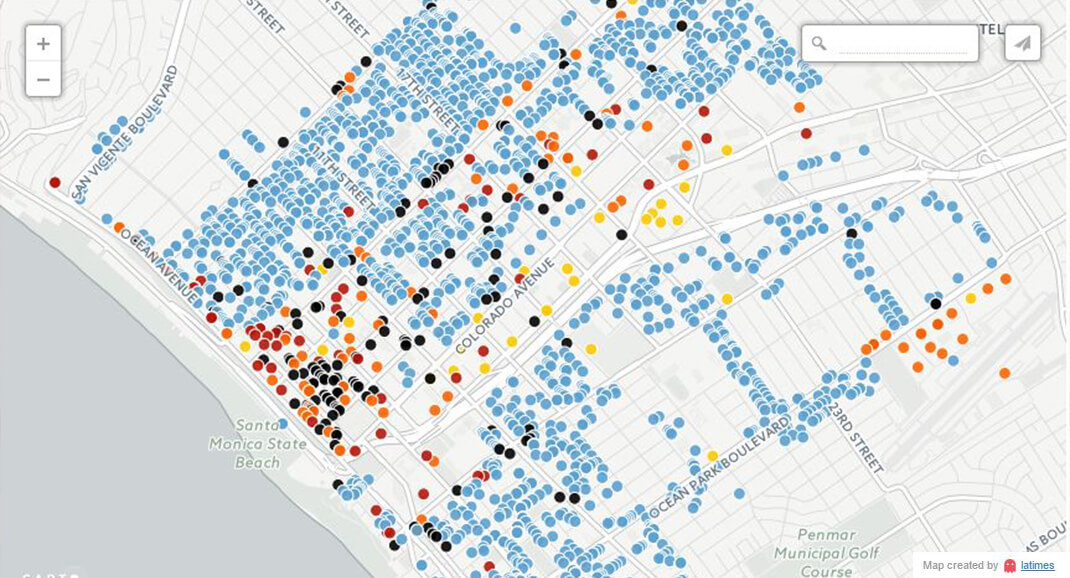The recent seismic ordinance targets five types of existing buildings considered vulnerable: Unreinforced Masonry (URM), Concrete Tilt-Up, Wood Soft-Story, Non-Ductile Concrete, and Pre-Northridge Steel Moment Frame Buildings.
Reportedly, beginning in May some building owners will receive notices from the City to complete a seismic assessment. Compliance dates for submitting Structural Evaluation Reports and the completion of seismic retrofits for non-compliant buildings vary based on building type.
In late 2015, the City of Los Angeles passed a major earthquake ordinance requiring soft-story wood apartments and non-ductile concrete buildings to be retrofitted. Santa Monica goes further by adding URM, Concrete Tilt-Up, and Pre-Northridge Steel Moment Frame buildings to the list of buildings that may require strengthening. It is likely that more jurisdictions in Southern California will follow suit. Specific seismic retrofit requirements are established by each local jurisdiction.
Click here for further information regarding the new Santa Monica ordinance.
Case Studies
Case Study #1: Historic Office Building

This particular building’s retrofit is designed to comply with the 2010 CHBC. Structural Focus used ASCE 41-06 to establish the seismic criteria and element capacities for the building; we designed the retrofit to meet a Collapse Prevention performance objective in a seismic event with 10% probability of exceedance in 50 years and a Life Safety performance objective in an event with a 20% probability of exceedance in 50 years. This is a common method of establishing the loading criteria to meet the California Historical Building Code and is the standard of practice for the retrofit design of historic buildings.
In close consultations with the City of Santa Monica Department of Building and Safety, it was agreed that the City will not require a further upgrade for this historic building.
Case Study #2: Previously Retrofitted Non-Ductile Concrete Building
Structural Focus has been approached by several building owners with properties in Santa Monica in response to the recent seismic ordinance. We are currently working with a client whose non-ductile concrete building was identified as one of the buildings in need of a Structural Evaluation Report and retrofit (if non-compliant). However, the building was reportedly retrofitted in 1995 based on the City Ordinance 1748 passed in 1994.
In 1994, after the January Northridge earthquake, the Santa Monica Council adopted Emergency Seismic Ordinance 1748 addressing the retrofit requirements for five vulnerable building types: Unreinforced Masonry, Concrete Tilt-Up, Soft-Story, Non-Ductile Concrete, and Welded Steel Frame buildings. However, it’s evident that not all of the identified buildings were addressed.
In communication with the Santa Monica Department of Building and Safety, we were informed that reported non-ductile concrete buildings retrofitted based on the prior City Ordinance 1748, Municipal code Chapter 8.76 and 8.80 will not be required to be retrofitted again for this new seismic retrofit ordinance IF the prior retrofit was permitted, inspected, and issued a certificate of completion. Our client retains a permit application and inspection report stating compliance with Ordinance 1748, we believe the City will approve the documents and waive the new retrofit requirements.
Under the new Santa Monica ordinance, the required Structural Evaluation Report and retrofit (if non-compliant) of non-ductile concrete buildings could be based on ASCE 41-13. This methodology is the current standard of practice for rehabilitating existing structures. The Department of Building and Safety declared that the report should be “conclusive” regarding any identified ASCE 41 deficiencies and should describe the mitigation measures required. If the Tier 1 evaluation is not conclusive, a Tier 2 evaluation will be needed to satisfy the Structural Evaluation Report requirements.
At Structural Focus, we work to find efficient seismic retrofit solutions. Our structural engineering services focus on the long-term goal of achieving project resiliency for our clients and their communities.
